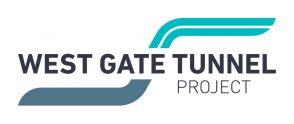The West Gate Tunnel Project will build high-quality noise walls to achieve a new standard for residents along the corridor.
After 2 years of talking with communities in the inner west, we understand that traffic noise is a key focus for residents. We’ve been monitoring noise along the project route and know that noise is already very high in some places.
With the West Gate Tunnel Project noise standard in place, the vast majority of homes along the West Gate Freeway will experience a significant reduction in noise. The new standard has been informed by community feedback and existing noise policies – including VicRoads policy and others around Australia. It will manage noise at the most affected properties – those closest to the freeway – so others further away will also gain the benefits.
A better noise standard for the west
In response to community feedback, we have developed a noise standard of 63dB(A) specifically for the West Gate Tunnel Project that responds to the unique noise issues and community needs along the project’s route. With some residents experiencing noise today of up to 70dB(A), this will be a significant improvement.
High quality noise walls
Noise walls will be used to minimise noise at buildings along the West Gate Tunnel Project. New noise walls will be built to a high standard – of a similar or better quality than noise walls on other newly built Melbourne freeways.
They have been designed with residents in mind to protect privacy, reduce traffic noise and provide an attractive outlook. The proposed design uses textured concrete and acrylic panels of pale blues and greens, which allow light to pass through.
Where space permits, planting will also be used to screen the noise walls.
What is noise?
Noise is measured on a scale of units called decibels, or dB for short. Noise measurements are usually adjusted to reflect how noise is perceived by the human ear, giving a noise unit called ‘A’ weighted decibels, or dB(A).
Noise from traffic varies over time, both from second to second, and from day to night. The term LA10 is used to describe the noise level which is exceeded for 10% of a measurement period, which for road traffic noise affecting residential properties, is 18 hours, from 6am to midnight.
Noise from traffic varies over times, both from second to second, and from day to night. The LA10 describes the noise level exceeded for 10 per cent of a specific period. For traffic noise affecting residential properties, the period is 18 hours from 6am to midnight.
How noise is measured and modelled
When measuring traffic noise, we use professional acoustic consultants who follow best practice methodology, guidance and regulatory requirements. A variety of factors are taken into consideration when measuring and modelling noise:
- traffic volume, speed and number of trucks
- gradient (steepness) of the road
- surrounding terrain, like hills or valleys
- soft ground or hard pavement between the road and the receiver
- distance from the road
- shielding by structures such as noise barriers or buildings.
Did you know?
- Doubling of traffic volume increases noise by around 3dB(A).
- An increase in noise level of 3dB(A) is only just audible to the human ear.
- An increase of 10dB(A) doubles the perceived loudness of noise.
- Reducing traffic speed from 100km/h to 80km/h reduces traffic noise by roughly 1.5dB(A), if the traffic volume remains the same.
